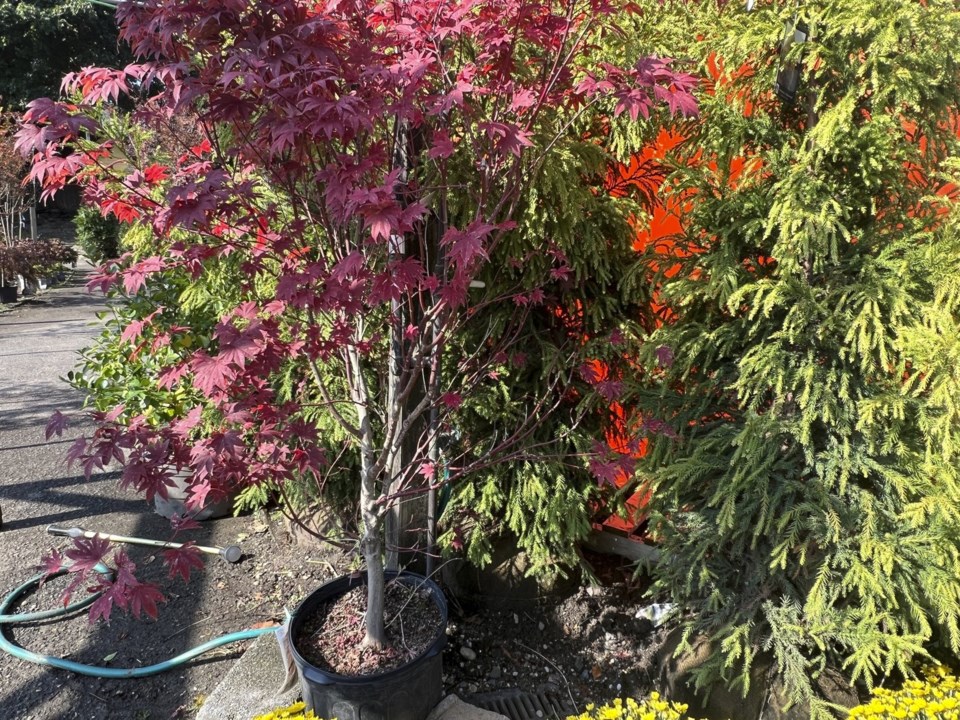If you’ve been pining to plant a tree, now is a great time.
The season’s cooling temperatures and still-warm soil mean less stress on newly planted trees, which allows them to direct more energy into growing strong roots rather than struggling to survive the heat and drought often seen in summer. And, because the trees are preparing for dormancy, that energy doesn’t have to be shared with root and flower growth.
Since planting a tree is a long-term investment, it’s important to get it right, and that will require a bit of research.
For starters, choose the right tree. Yes, this means selecting a tree that will make you happy, but it also means taking your hardiness zone, soil type, sunlight exposure and natural moisture levels into consideration.
The tree’s mature size is important, too, lest it grow into overhead electrical wires, eaves or other overhangs, or its roots grow to interfere with underground utilities.
When digging a hole, make it twice as wide as the tree’s root ball and exactly as deep. Then remove the tree from its container and place it in the center of the hole, taking care to support it under its roots rather than holding it by the trunk.
Evaluate its depth. It should land level with the ground around it so that when planted, all the roots are covered with soil, but the flare where the bottom of the trunk attaches to them is not. If the top of the root ball is too high, remove the tree and dig the hole deeper; if it’s too low, add more soil to the bottom of the hole, tamp it firmly and check again.
If your new tree came balled-and-burlapped rather than in a container, that means it was grown in a field and dug up for sale. Although often larger, these trees are more susceptible to transplant shock because their roots are severed in the digging process. Canvas or burlap is tied around the remaining root system to retain soil and prevent the roots from falling apart during transport. Sometimes, roots are enclosed in a wire cage.
After you’ve situated the tree at the proper depth in the hole, cut and remove the twine (or use wire cutters to remove the cage) and cut away as much of the burlap as possible, allowing the portion under the roots to remain; it will gradually decompose without interfering with root growth. (However, if the roots are wrapped in a synthetic material like plastic or vinyl, remove it all.)
If the roots appears tightly wound, gently loosen them with a garden fork to allow them to grow outward into the soil.
Next, confirm the tree is straight, then backfill the hole with soil, periodically tamping it down to eliminate air pockets. Never mound soil up against the trunk.
Thoroughly moisten the soil with a slow flow of water. Allow the surface to dry for a day or so, then add 2 inches of compost or well-rotted manure, topped with 2 inches of wood chips or mulch, over the soil, extending at least as far as the branches extend overhead. Push those materials 4 inches away from the trunk (never mound soil, amendments or mulch up against trunks “volcano” style; the practice slowly kills trees).
Water your new tree regularly during its first 12 months, especially during hot and dry spells. Then, familiarize yourself with the species’ requirements. Some tree types will need supplemental watering throughout their lives, but others will not.
___
Jessica Damiano writes weekly gardening columns for the AP and publishes the award-winning Weekly Dirt Newsletter. You can sign up here for weekly gardening tips and advice.
___
For more AP gardening stories, go to https://apnews.com/hub/gardening.
Jessica Damiano, The Associated Press




